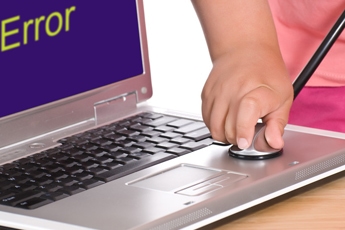The electronic health record has become an integral part of medical practice over the last ten years, and is expected to ease many processes such as medical records retrieval and medical claims review among others. However, EHRs are complex because of their different standards, and therefore they are prone to errors that can prove adverse to patients. The responsibility to ensure that EHR systems work to promote superior quality and safe care is distributed among EHR vendors, clinicians and healthcare systems. The extent of patient harm resulting from errors related to electronic health records are by and large under reported and even unrecognized.
EHR users are highly prone to making medication errors that can compromise patient safety, according to a recent report by the Pennsylvania Patient Safety Authority. Approximately 70% of all medication errors reach the patient, and around 1/3rd of these mistakes occur during the administration process.
Other factors that contribute to medication prescription, dosage, and administration errors include:
- Health IT malfunctions
- Hybrid paper-electronic workflows
- Incorrect CPOE (computerized physician order entry) use
- EHR documentation issues
Patients become vulnerable when EHR is poorly implemented and clinicians and other users lack proper training. Communication errors exist between one provider and another, as well as between provider and patient. These errors are seen to primarily occur in in-patient and ambulatory settings, according to the above mentioned report whereas only 8% of incidents were based in the emergency department.
Patient harm leads to malpractice litigation and action against the erring healthcare system or provider. A study on the role that HIT plays in malpractice claims carried out by Mark L.Gaber and his colleagues, is significant in this regard. They used an insurance database containing more than 300,000 cases, and published their findings in the Journal of Patient Safety.
- Only less than 1% of the 248 claims considered involved an HIT-component, but more than 80% of those suits alleged harms of medium to intense severity.
- The researchers point out that the 248 claims represented only the tip of the iceberg because the vast majority of EHR-related cases do not generate lawsuits.
- This study found 3 major reasons for EHR-related litigation.
- Medication errors (31%). As an example, an infant died from a drug overdose following a transcription error that happened when a handwritten order was entered into the computer.
- Diagnostic errors (28%). For example, in one case ultrasound results were routed to the incorrect tab in the EHR. This led to a yearlong delay for a cancer patient.
- Complications of treatment (31%). For example, a physician was unable to access certain ED notes which led to the patient dying of a subarachnoid hemorrhage.
A major patient safety concern is ineffective communication among nurses in the inpatient setting. Issues related to nurses include poor patient monitoring, miscommunication between providers about a patient’s condition, and poor documentation of clinical findings. To address this problem, and ensure that all communication is completed in an accurate and timely manner, there should be systems and processes in place that encourage nurses to communicate all concerns.
The outcomes of EHR errors can be severe. Information overload in the EHR and inadequate health information exchange lead to providers making incorrect assumptions regarding who is receiving what data, and who is responsible for relaying the information to the patient. Apart from generating malpractice lawsuits and millions of dollars in financial losses, EHR errors also cause serious patient safety deficiencies.
How can care providers avoid common EHR related errors?
- Be extremely cautious during transition periods
- Don’t trust the system blindly. Understand that there can be technology related snags.
- Be very careful when copying and pasting information. Overuse of this practice can result in outdated, redundant, and inaccurate information entering the medical record.
- Be cautious when using templates and point-and-click functions to generate content.
Most of the patient safety events that cause patient harm are preventable. To prevent such untoward incidents, healthcare providers can invest in reliable care coordination strategies and EHR documentation improvement programs that focus on developing smoother transitions of care. Policies and procedures should promote patient-centred attentiveness and compassion alongside open dialogue with caregivers. An EHR system with an intuitive user interface could reduce the risk of human error. EHR users should be able to enter and retrieve data and share it with other healthcare professionals for optimizing treatment outcomes and patient safety.




